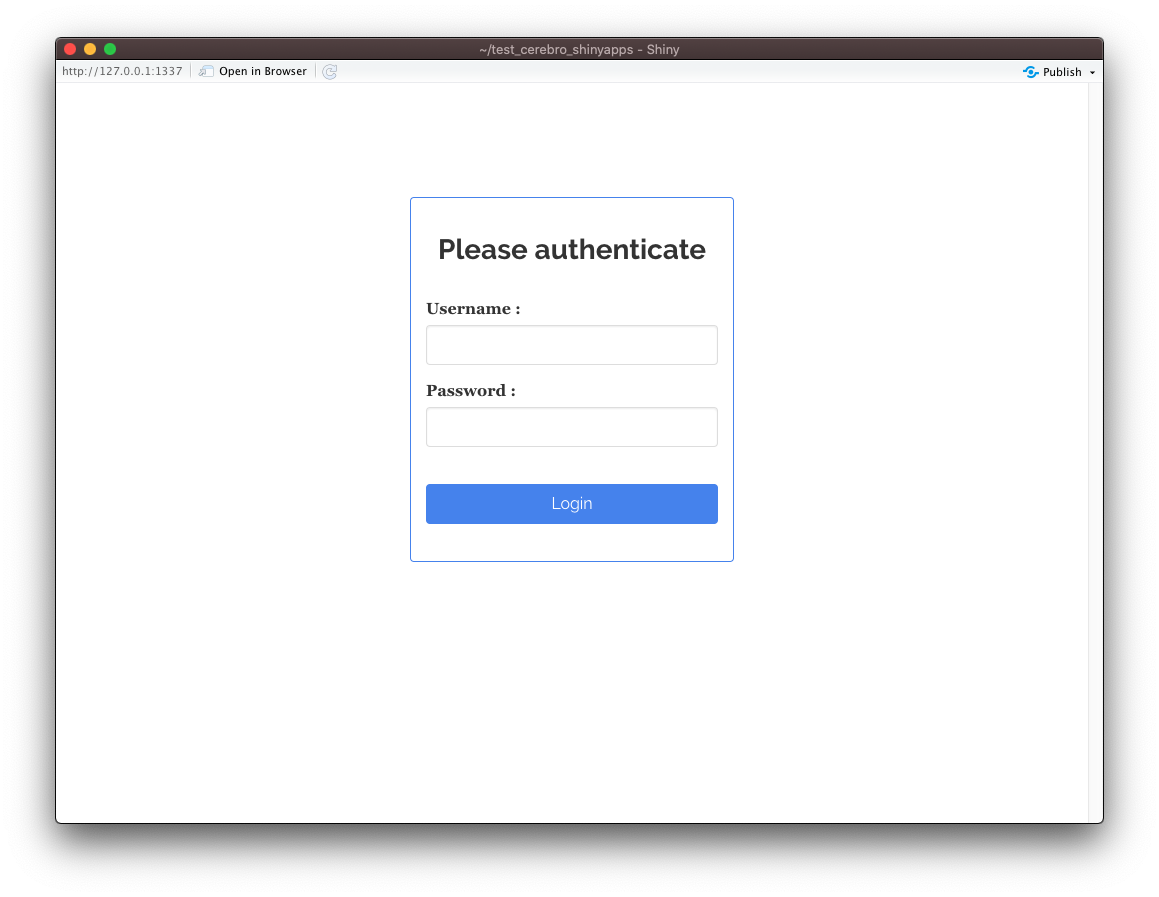Control access to Cerebro with a login page
Roman Hillje
12 March, 2021
Source:vignettes/control_access_to_cerebro_with_a_login_page.Rmd
control_access_to_cerebro_with_a_login_page.RmdOverview
When hosting Cerebro on a web server, it can be useful to control who has access to it, especially, when it is pre-loaded with a data set (see vignette('launch_cerebro_with_pre-loaded_data_set')). This can be done with the shinymanager package, however some (minor) adjustments must be made to the source code of Cerebro.
Preparation
app.R
At the top of the app.R file, add the shinymanager package to be loaded alongside other packages that are required by Cerebro:
shiny_server.R
Add this to the top of the shiny_server.R file, before the definition of the server function starts:
user_credentials <- tibble::tribble(
~user, ~password, ~start, ~expire, ~admin,
"user1", "reallygoodpassword1", "2020-08-01", NA, FALSE,
"user2", "reallygoodpassword2", "2020-09-01", NA, FALSE
)Within the definition of the server function, right at the top, add this:
res_auth <- shinymanager::secure_server(
check_credentials = shinymanager::check_credentials(user_credentials)
)The head of the shiny_server.R file should now look similar to this:
## define users that can access Cerebro --------------------------------------##
user_credentials <- tibble::tribble(
~user, ~password, ~start, ~expire, ~admin,
"user1", "reallygoodpassword1", "2020-08-01", NA, FALSE,
"user2", "reallygoodpassword2", "2020-09-01", NA, FALSE
)
## server function -----------------------------------------------------------##
server <- function(input, output, session) {
## check user authentication -----------------------------------------------##
res_auth <- secure_server(
check_credentials = check_credentials(user_credentials)
)
# ...
shiny_UI.R
At the end of the file, after the definition of the ui function, add this:
ui <- shinymanager::secure_app(ui)Usage
Now, when opening the Cerebro user interface, user have to authenticate themselves as one of the users in the user_credentials data frame. Of course, the use credentials can also be loaded from a file, which might be easier to manage.
Thanks to Michael Heming from the University of Münster for pointing this possibility out and sharing his implementation.
